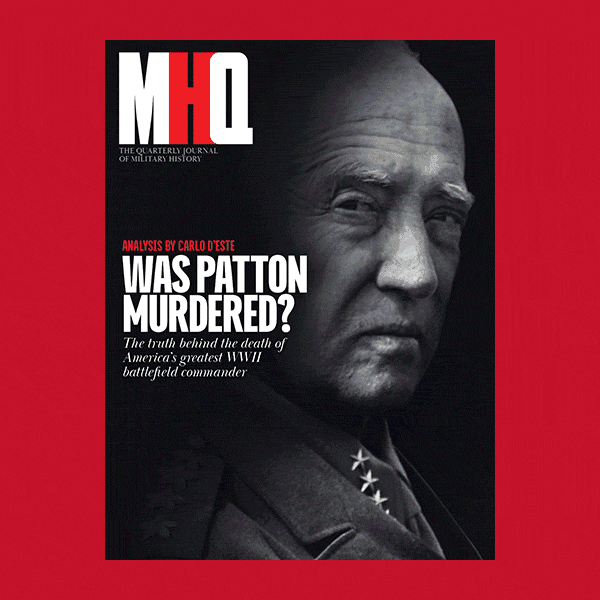The Mongol Subjugation of Novgorod (1238)
In 1238, a 40,000-man Mongol horde led by Genghiz Khan’s grandson, Batu Khan, launched into a marketing campaign of conquest towards the Rus. By the tip of 1238 they’d taken 14 main cities and razed them for failing to heed Batu’s ultimatums. Solely two main cities within the northern Rus territories had been spared: Pskov and Novgorod, which pledged fealty to the Nice Khan and agreed to yearly pay a tax primarily based on 10 % of their produce. Novgorod, a significant fur-trading middle, was surrounded by potential enemies, together with not solely the Mongols, however the Swedes and an order of German warrior-monks referred to as the Teutonic Knights.
Each western powers coveted the lands to the east, declaring their function to unfold Catholicism whereas destroying the Jap Orthodox Church. Appointed kniaz (prince) of Novgorod in 1236 at age 15, Alexsandr Yaroslavich was compelled to decide on his pals and enemies fastidiously. He knew resisting the Mongols was suicide, however they tended to spare those that surrendered and left them to their very own home affairs…whereas the Swedes would seize land and the Germans would kill practically everyone.
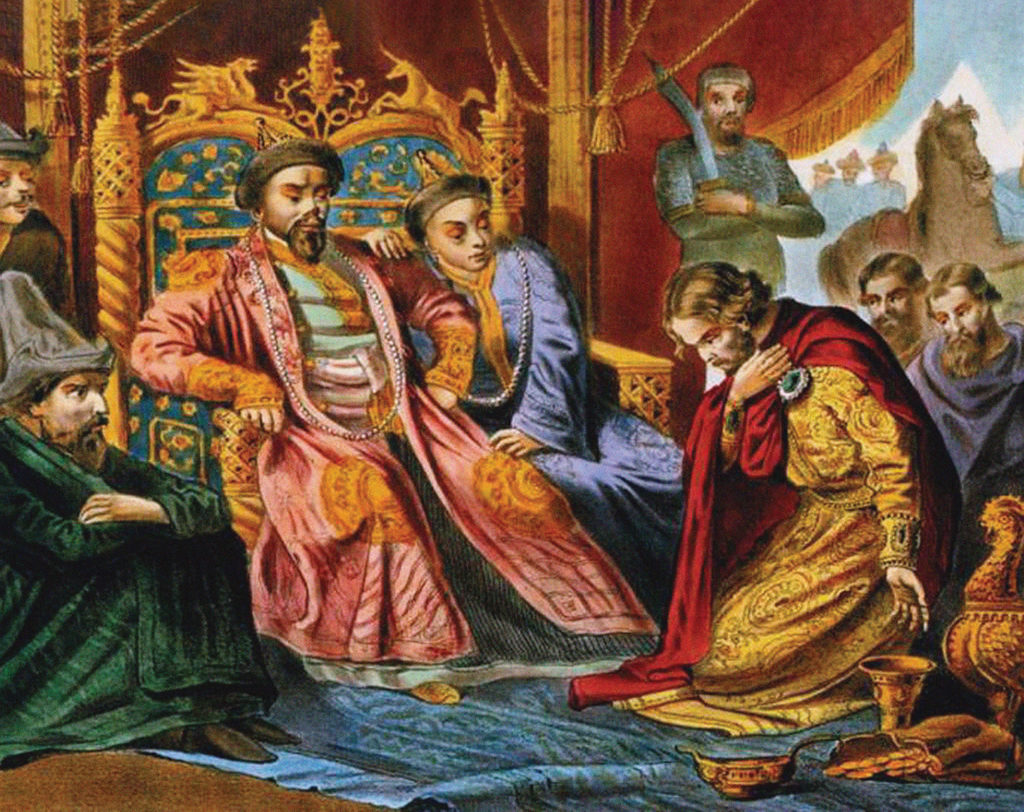
(Heritage Photographs/Getty Photographs)
Because the Mongols marched on Novgorod in 1238, the spring thaws hampered their horses, halting the marketing campaign 120 kilometers in need of its goal. Seizing his alternative, Alexsandr met the Mongols and accepted their phrases. Pskov did the identical. The Mongols moved on, establishing their western headquarters at Sarai below a yellow banner for which their drive turned referred to as the Golden Horde. Alexsandr made the precise alternative. He would later need to battle each his western enemies, defeating the Swedes on the Neva River on July 15, 1240 (for which he acquired the moniker Alexsandr Nevsky) and the Livonian Knights at Lake Peipus on April 5, 1242. Credited with preserving Russian civilization at a time of horrible duress, Alexsandr did so by understanding each when to combat and when to not.
The 335-Years Conflict (1651-1986)
What in the event that they gave a battle and no one got here? Higher nonetheless, what in the event that they gave a battle and no one observed? Throughout the English Civil Conflict, the United Provinces of the Netherlands sided with the English Parliament. As one consequence many Dutch ships had been seized or sunk by the Royalist navy, which by 1651 was primarily based within the Isles of Scilly, supporting the final diehards in Cornwall.
On March 30 Lt. Adm. Maarten Harpertsoon Tromp arrived at Scilly, demanding reparation for damages to Dutch ships. Receiving no passable reply, Tromp declared battle however then sailed away—and by no means returned. Critics of that so-called “battle” have since famous that as an admiral, not a sovereign, Tromp was actually in no place to formally declare battle. The problem appeared moot in June 1651 when a Parliamentarian fleet below Common at Sea Robert Blake arrived at Scilly to compel the final Royalists to give up.
So issues stood till 1986, when historian Roy Duncan chanced upon Tromp’s idle risk and in the middle of investigation concluded that, the utter lack of hostilities however, the Netherlands and Isles of Scilly had spent the previous 335 years at battle however had by no means gotten round to declaring peace. That oversight was lastly remedied on April 17, 1986, when Dutch ambassador to Britain Jonkheer Rein Huydecoper formally declared one among historical past’s longest conflicts at an finish—including that it should have horrified the islands’ inhabitants “to know we might have attacked at any second.”
The Kettle Conflict (1784)
Together with profitable independence, in 1585 the Republic of the Netherlands closed off the Scheldt River to commerce from the Spanish Netherlands to the south, adversely affecting Antwerp’s and Ghent’s entry to the North Sea whereas serving to Amsterdam’s benefit. Spain accepted that association once more within the 1648 Treaty of Westphalia, however in 1714 Spain ceded the southern Netherlands to Habsburg Austria. Between 1780 and 1784 the Netherlands allied with the fledgling United States of America in hopes of gaining a bonus over Britain however was defeated. In search of to benefit from that scenario, on Oct. 9, 1784, Holy Roman Emperor Joseph II despatched three ships, headed by the massive merchantman Le Louis, into the Scheldt.
Calling his bluff, the Dutch despatched the warship Dolfijn to intercept the Austrians, firing a shot by a soup kettle aboard Le Louis. At this level the Austrian flagship surrendered. On Oct. 30 Emperor Joseph declared battle and the Netherlands started mobilizing its forces. Austrian troops invaded the Netherlands, razing a customized home and occupying Fort Lillo, whose withdrawing garrison broke the dikes and inundated the area, drowning many locals however halting the Austrian advance. France mediated a settlement signed on Feb. 8, 1785, because the Treaty of Fontainebleau, upholding the Netherlands’ management over the Scheldt however recompensing the Austrian Netherlands with 10 million florins.
The Anglo-Swedish Conflict (1810–1812)
With the signing of the Treaty of Paris on Jan. 6, 1810, Emperor Napoleon imposed his Continental System all through Europe and inserting a commerce embargo on one among his remaining enemies, Nice Britain. That included Sweden, Britain’s longtime buying and selling associate. A booming smuggling commerce led Napoleon to situation an ultimatum on Nov.13, 1810, giving his reluctant ally 5 days to declare battle and confiscate all British transport and items discovered on Swedish soil, or itself face battle from France and all its allies. Sweden duly declared battle on Nov. 17, however there have been no direct hostilities over the subsequent 12 months and a half—in actual fact, Sweden regarded the opposite method whereas the Royal Navy occupied and used its isle of Hanö as a base.
Mockingly, this delicate standoff was upset by a Frenchman, Marshal Jean-Baptiste Bernadotte, who with the demise of Sweden’s Crown Prince Charles August on Could 28, 1810, was elected crown prince on Aug. 21. Though King Charles XIII was Sweden’s official ruler, his sickness and disinterest in nationwide affairs induced him to depart Crown Prince Bernadotte because the de facto ruler—who put Swedish pursuits above France’s. Relations with Napoleon deteriorated till France occupied Swedish Pomerania and the isle of Rügen in 1812. Bernadotte’s response included the Treaty of Örebro on July 18, 1812, formally ending the cold battle towards Britain and thus declaring a soon-to-be bloodier battle towards Napoleon’s France.
The Aroostook Conflict (1838–1839)
Each the American Revolutionary Conflict and the Conflict of 1812 ended with unfinished enterprise concerning the boundaries between the US and British North America. On a number of events each nations got here to the brink of additional conflicts. One such was the “Aroostook Conflict” concerning unresolved land claims between Decrease Canada and Massachusetts, exacerbated in 1820 when a brand new state, Maine, broke away from Massachusetts. By 1839 the U.S. had raised 6,000 militia and native posses to patrol the disputed territory whereas British troop energy rose to as excessive as 15,000.
There have been no direct confrontations.
Two British militiamen had been injured by bears. The decisive motion got here in 1842 within the type of negotiations between British Grasp of the Mint Alexander Baring, 1st Baron Ashburton and U.S. Secretary of State Daniel Webster. As was usually the case, the resultant Webster-Ashburton Treaty was a compromise. Most land went to Maine, leaving a significant space northeast for the Halifax Street to attach Decrease Canada with the Maritime provinces of New Brunswick and Nova Scotia. In 1840 Maine created Aroostook County to manage civil authority in its anticipated territory, from which the incident bought its identify within the historical past books.
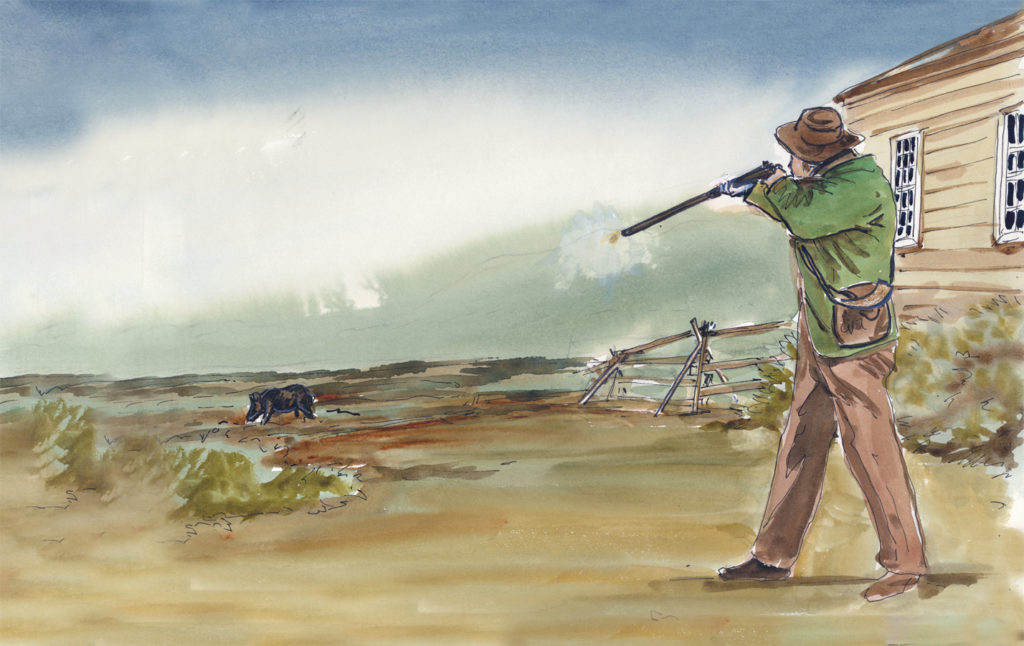
(NPS, Harpers Ferry Heart, Commissioned Artwork Assortment, artist Media Design Group, Inc.)
The Pig Conflict (1859)
Since not less than the 1844 American presidential election that bought James Okay. Polk elected on a slogan of “Fifty-four-Forty or Battle,” the US set its sights on elevating the northern border of the “Oregon Territory” (together with what’s now Oregon, Washington, Idaho and British Columbia) to 54 levels 40 minutes north latitude, somewhat than 49 levels north because it had been in 1846. That border bisected San Juan Island, within the Straits of Juan de Fuca between Seattle and Vancouver, the place on June 15, 1859, American resident Lyman Cutlar caught Charlie Griffin’s pig rooting in his backyard and shot it useless.
Cutlar subsequently provided to compensate his British neighbor $10 for his loss. Griffin angrily demanded that native authorities arrest Cutlar. The U.S. authorities wouldn’t countenance Britain arresting an American citizen. Quickly either side had been reinforcing the island with troops and offshore warships. Issues got here to a head when the governor of British Columbia ordered the commander of the British Pacific Fleet, Adm. Robert Baynes, to invade the island.
At that crucial hour Baynes turned the voice of purpose when he disobeyed the order, declaring that he would “not contain two nice nations in a battle over a squabble a couple of pig!”
Information of the standoff spurred Washington and London to barter whereas decreasing troop energy on San Juan to 100 every. Lastly in 1872, a global fee headed by Kaiser Wilhelm I of Germany settled the matter by ceding all the island to the US. Complete casualties: one British pig.
The Pembina Raid (1871)
Following the American Civil Conflict a committee of radical nationalists referred to as the Irish Brotherhood, or Fenians, launched into three makes an attempt to seize giant areas of British North America to ransom for an unbiased Irish republic. Though the individuals had been largely hardened Civil Conflict veterans—from either side—their first try to seize the Niagara Falls peninsula in 1866 failed. A second try launched from New York and Vermont in 1870 was a larger failure—largely as a result of the Fenians had been dealing with better-prepared militiamen now defending their very own sovereign state, the Dominion of Canada. Though the Irish Brotherhood itself had given up on the thought, Col. John O’Neill set out west for another attempt, planning to invade Manitoba and type an alliance with the half-blood Métis, then rebelling towards the Canadian authorities for land, ethnic and spiritual rights. By late 1871, nonetheless, Ottawa was acquiescing to Métis calls for. Consequently the Métis had no intention of allying with the Fenians.
Undeterred, at 7:30 a.m. on the morning of Oct. 5, 1871, O’Neill led 37 followers to grab the Hudson’s Bay Firm buying and selling publish and the close by East Lynne Customs Home in Pembina. Of 20 folks taken prisoner, a younger boy escaped and ran to the U.S. Military base at Fort Pembina. Whereas a couple of thousand Canadian militia marched south to cope with the risk, Capt. Loyd Wheaton led 30 troopers of Firm I, twentieth U.S. Infantry Regiment to the settlement. O’Neill later stated he was loath to combat bluecoats alongside whom he had served in the course of the Civil Conflict.
The Fenians fled north, however O’Neill and 10 others had been rapidly captured. By 3 p.m. the disaster was over. Canada had seen off its final invasion risk with out firing a shot. Taken to St. Paul, Minnesota, O’Neill was tried twice for violating the Neutrality Acts and twice acquitted on the grounds that he had not likely accomplished so. Unknown to O’Neill, in Could 1870 the U.S. Military Corps of Engineers had straightened out the disputed Canadian border, leading to Pembina now not being 1 / 4 mile north of the border, however three-quarters of a mile south in Dakota Territory. O’Neill gave up his invasion ambitions below an avalanche of public ridicule over not solely failing to beat Canada however failing to even discover Canada!
The Lobster Conflict (1961–1963)
There have been quite a few conflicts over territory and others over the pure assets they produce. One instance started in 1961 when French fishermen searching for spiny lobsters off Mauretania tried their luck on the opposite facet of the Atlantic and found crustacean gold on underwater cabinets 250 to 650 toes deep. Quickly, nonetheless, the French vessels had been intercepted and pushed off by Brazilian corvettes upholding a authorities declare that that a part of the Continental Shelf was their territory, as was any sea life that walked on it. On Jan. 1, 1962 Brazilian warships apprehended the French Cassiopée, however the subsequent time two Brazilian corvettes went after French lobstermen they had been in flip intercepted by the French destroyer Tartu.
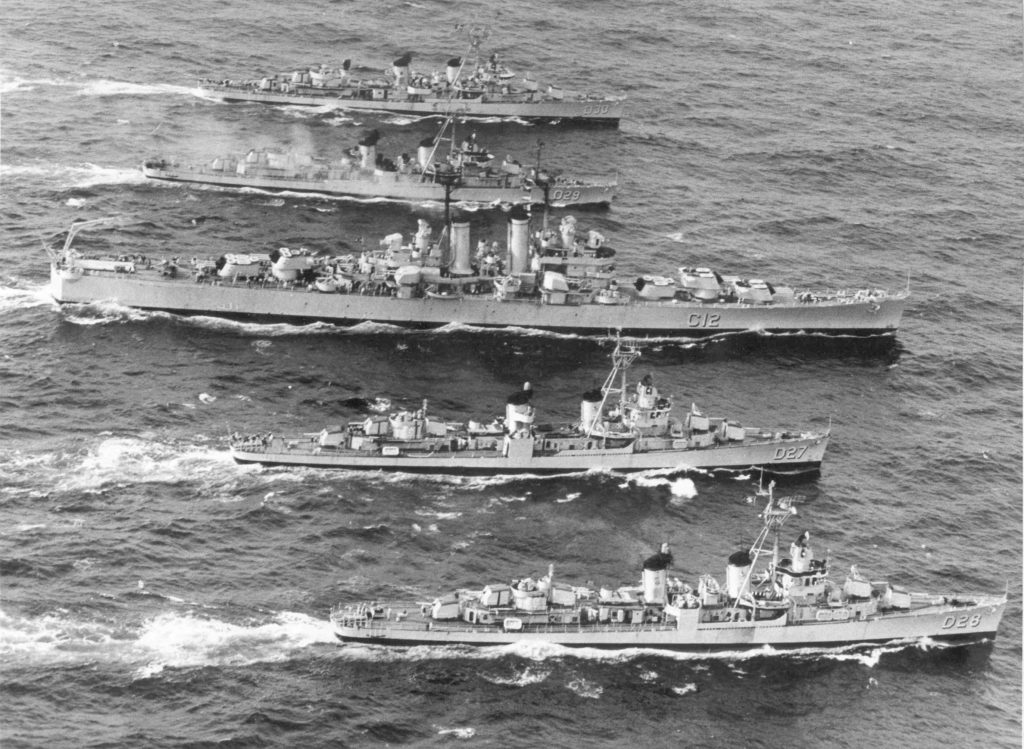
(Marinha do Brasil)
By April 1963 either side had been contemplating battle. Fortuitously, a global tribunal summarized the French declare as being that lobsters, like fish, had been swimming within the sea, not strolling on the shelf. This prompted Brazilian Admiral Paolo Moreira da Silva’s counterclaim that that argument was akin to saying that if a kangaroo hops by the air, that made it a fowl.
The matter was lastly settled by the United Nations Conference on the Regulation of the Sea on Dec. 10, 1964. By it, Brazilian coastal waters had been prolonged to 200 nautical miles however permitted 26 French ships to catch lobsters for 5 years in “designated areas,” paying a small share of their catch to Brazil. In any other case the 2 nations might need warred for a pretender to the throne of the true lobster—spiny lobsters, a.okay.a. langustas, don’t have claws like their North Atlantic cousins and are thus not thought-about true lobsters. Though usually used for “lobster tails,” some may not discover them tasty sufficient “to die for.”
The Sumdorong Chu Standoff (1986–1987)
Whereas the US and the Soviet Union had been having a nuclear Chilly Conflict faceoff, in October 1962 border tensions within the Himalayas between India and the Individuals’s Republic of China flared when Indian troops seized Thag La Ridge. The Individuals’s Liberation Military reacted in drive, inflicting a stinging defeat on the Indians at Namka Chu. Over the subsequent 24 years either side reformed and improved their army capabilities whereas nonetheless eying each other suspiciously. On Oct. 18-20, 1986, India staged Operation Falcon, an airlift that occupied Zemithang and a number of other different excessive floor positions, together with Hathung La ridge and Sumdorong Chu. The PLA responded by shifting in reinforcements, calling on India for a flag assembly on Nov. 15. This was not forthcoming.
Within the spring of 1987 the Indians carried out Operation Chequerboard, an aerial redeployment of troops involving 10 divisions and a number of other warplane squadrons alongside the North East India border. China declared these actions a provocation, however India confirmed no intention of withdrawing from its positions. By Could 1997 troopers of each powers had been staring down one another’s gun barrels whereas Western diplomats, recognizing comparable language to that previous the 1962 conflict, braced for a serious battle.
Cooler heads appear to have prevailed, for on Aug. 5, 1987, Indian and Chinese language officers held a flag assembly at Bum. Either side agreed to debate the scenario and in 1988 Prime Minister Rajiv Gandhi visited Beijing, reciprocating for the primary time Zhou Enlai’s April 1960 go to to India. The talks had been accompanied by mutual reductions in forces from a Line of Precise Management that was agreed upon in 1993. With the disaster defused, there could be no main Sino-Indian border incidents once more till 2020.
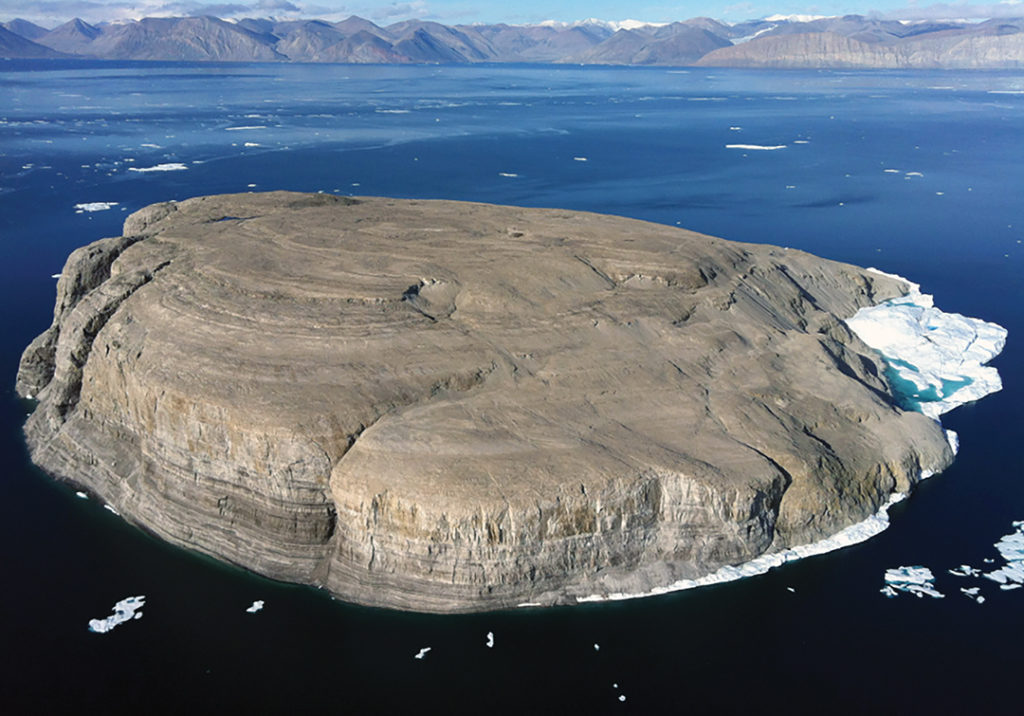
(Toubletap, CC BY-SA 3.0)
The Whisky Conflict (1984–2022)
The disagreement over the precise nationwide boundaries dividing little Hans Island concerned two of the least seemingly adversaries, each members of the North Atlantic Treaty Group: Canada and Denmark. Mendacity within the Kennedy Channel between Ellesmere and the autonomous Danish territory of Greenland, Hans was divided in half by a line that left a niche in its precise border descriptions. That hole went ignored till 1980, when the Canadian agency Dome Petroleum started 4 years of analysis on and across the island.
Issues took a extra particular route in 1984, nonetheless, when Canadian troopers landed on Hans and left behind a Maple Leaf flag and a bottle of whisky. In that very same 12 months the Danish Minister for Greenland Affairs arrived to plant the Danish flag with a bottle of schnapps and a letter saying, “Welcome to the Danish Island.” These provocations heralded a long time of escalating mutual visits and gestures that left all method of souvenirs behind. Lastly, on Aug. 8, 2005—following a very busy July—the Danish press introduced that Canada wished to begin critical negotiations to settle the remaining boundary dispute as soon as and for all.
Even so, it took the Russian “particular army operation” towards Ukraine to remind the world how critical battle might be, ensuing within the rivals unveiling a plan on June 14 for satisfactorily dividing the unresolved remnants of Hans Island between the Canadian territory of Nunavut and Danish Greenland.

